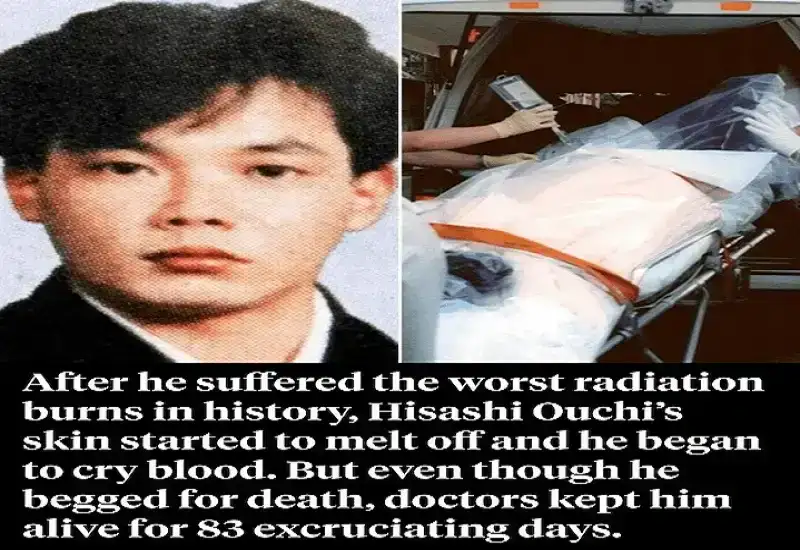The story of hisashi ouchi photos, a victim of one of the most devastating nuclear accidents in history, has remained etched in the annals of science and human endurance. His case is a chilling reminder of the catastrophic risks associated with nuclear energy when mishandled. This article delves deeply into the circumstances, aftermath, and ethical dilemmas surrounding Ouchi’s ordeal, as well as the photos that have circulated, raising questions about their appropriateness and sensitivity.
The Tokaimura Nuclear Accident: A Brief Overview
On September 30, 1999, a criticality accident occurred at a nuclear fuel reprocessing facility in Tokaimura, Japan. The accident was the result of procedural lapses and human error during the handling of uranium, leading to an uncontrolled nuclear reaction. Among the workers present, Hisashi Ouchi, Masato Shinohara, and Yutaka Yokokawa suffered severe radiation exposure.
What Happened to Hisashi Ouchi?
Ouchi was the closest to the reaction when it occurred, exposing him to an unimaginable 17 sieverts of radiation, far beyond the lethal dose of 5 sieverts. The radiation destroyed his DNA, rendering his body incapable of cellular repair. His condition was so dire that doctors described his state as akin to “being skinned alive.”
Despite his grave injuries, Ouchi was kept alive for 83 excruciating days in an attempt to study the effects of radiation exposure and find possible treatments. His survival became a testament to medical perseverance but also sparked debates about the ethical considerations of prolonging life in such circumstances.
The Controversial Photos of Hisashi Ouchi
Why Are the Photos So Disturbing?
Photos of Hisashi Ouchi have surfaced online over the years, purportedly showing the severe burns, swelling, and tissue damage he endured. These images have been widely shared, often without context, leading to public outrage and debates about their ethical implications.
- Lack of Consent: The photos were reportedly taken as part of medical documentation. Sharing them without Ouchi’s or his family’s consent violates basic ethical norms.
- Exploitation of Tragedy: Many argue that such images are used for shock value rather than educational purposes.
- Insensitive Circulation: The repeated sharing of these photos disregards the feelings of Ouchi’s family and those affected by the tragedy.
Should These Photos Be Used?
While some experts believe the photos serve as a powerful warning about the dangers of nuclear energy, others advocate for a more sensitive approach. Educational institutions and scientific forums may find value in controlled access, ensuring the dignity of the victim is preserved.
The Medical Battle to Save Hisashi Ouchi
Ouchi’s treatment included bone marrow transplants, skin grafts, and experimental therapies. Despite these efforts, his condition worsened due to the massive radiation damage to his internal organs and immune system. His blood could no longer clot, and he suffered from multiple organ failures.
Ethical Dilemmas in Prolonging Life
Doctors faced immense pressure to keep Ouchi alive, both for medical research and due to societal expectations. However, his prolonged suffering raised critical ethical questions:
- Was it humane to extend his life despite unbearable pain?
- Should medical experiments take precedence over patient dignity?
The debate continues to be a cornerstone in discussions about end-of-life care and the rights of patients.
Lessons Learned from the Tokaimura Accident
The Tokaimura disaster exposed significant flaws in nuclear safety protocols and human oversight. Key lessons include:
- Need for Rigorous Training: Workers lacked proper training in handling radioactive materials, leading to fatal errors.
- Improved Safety Measures: The accident prompted Japan to implement stricter regulations on nuclear facilities.
- Public Awareness: The tragedy underscored the importance of educating the public about nuclear energy’s risks and benefits.
The Impact on Nuclear Energy Policies
The Tokaimura accident, along with other nuclear disasters like Chornobyl and Fukushima, has shaped global policies on atomic energy. Governments have increased investments in research, safety technologies, and emergency response strategies to prevent similar incidents.
Conclusion: A Tragic Legacy
hisashi ouchi photos story is one of profound suffering and resilience. While his ordeal is a cautionary tale, it also highlights the need for ethical considerations in medical and scientific pursuits. Sharing his photos should be approached with sensitivity, ensuring that his memory is honored rather than exploited.
The legacy of Hisashi Ouchi and the Tokaimura accident continues to resonate, reminding us of the high stakes of nuclear energy and the critical importance of safety and ethics. See More.


